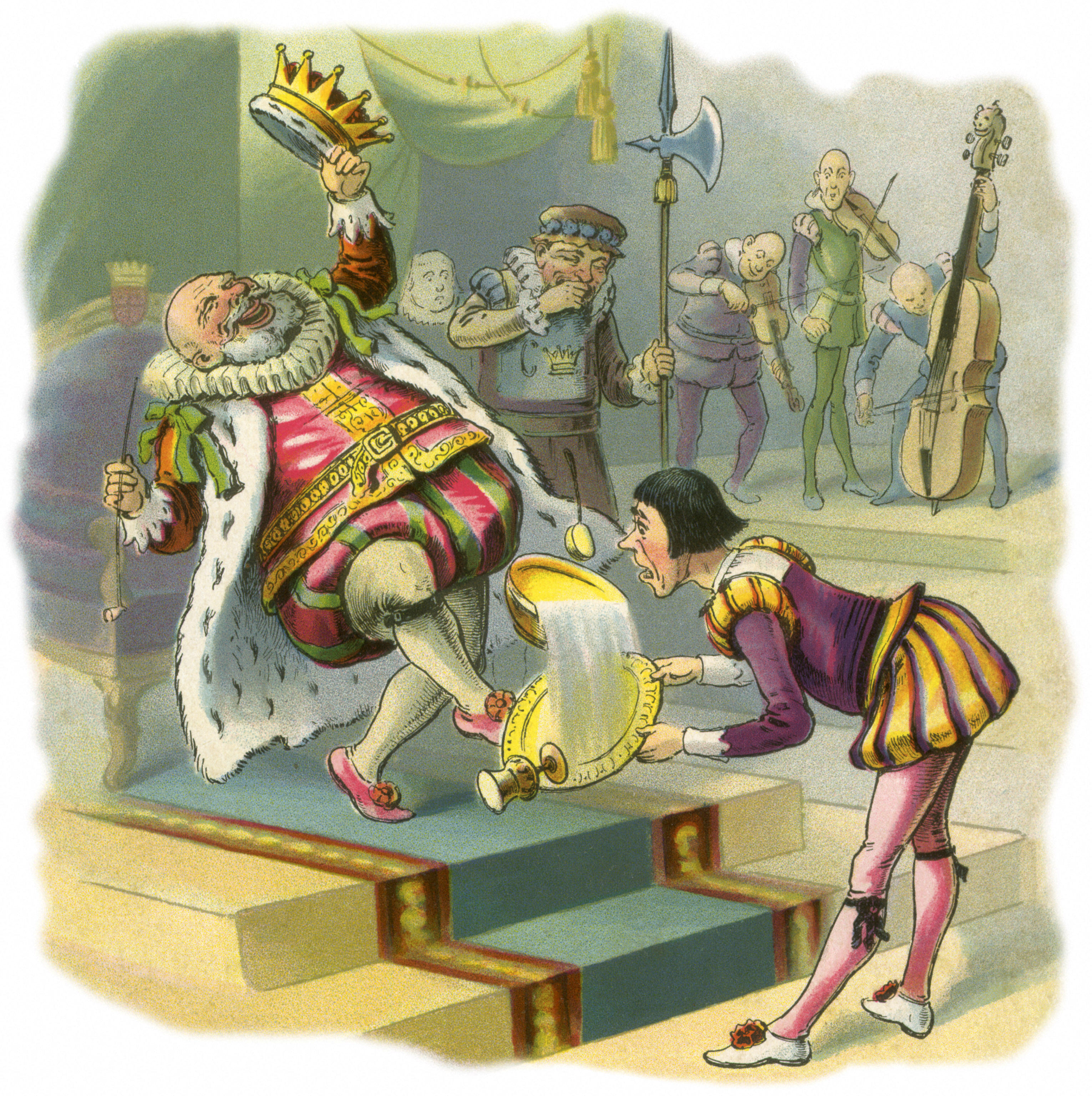Nursery rhyme is a rhythmical poem that amuses or soothes young children. Many nursery rhymes also pass along cultural information and values. These poems are a vital form of folk literature. They appeal to children because of their pleasing rhymes and sounds and compelling rhythms. Youngsters often keep time with the musical rhythm of the words by clapping their hands or rocking back and forth. Nursery rhymes help children appreciate the many sounds and rhythms of a language.

The great variety of stories and characters in the verses stimulates the imagination. Children delight in the humor and surprises in such rhymes as “Mary Had a Little Lamb” and “Hey Diddle Diddle.” Other rhymes, including “Three Little Kittens” and “Old Mother Hubbard,” introduce children to their first stories. A child’s familiarity with nursery rhymes can lead to a lasting appreciation of poetry and prose.
Types
The most popular types of nursery rhymes include (1) lullabies, (2) singing game rhymes, (3) nonsense rhymes, (4) rhyming riddles, (5) counting-out rhymes, (6) tongue twisters, (7) verse stories, and (8) cumulative rhymes.
Lullabies
are simple, soothing melodies sung to children to help them fall asleep. “Rock-a-bye Baby” is probably the best-known lullaby in the English language.
Rock-a-bye, baby, on the tree top, When the wind blows the cradle will rock; When the bough breaks the cradle will fall, Down will come baby, cradle, and all.
Singing game rhymes
accompany dances or certain games. For example, “Ring-a-Ring O’Roses” is sung by a group of children who join hands and dance in a circle.
Ring-a-ring o’roses, A pocket full of posies, A-tishoo! A-tishoo! We all fall down.
Nonsense rhymes
provide a verbal release from the “sensible” requirements of everyday life. This one has the humor and wit typical of such verses.
Loading the player...I eat my peas with honey, I’ve done it all my life. It makes the peas taste funny, But it keeps them on the knife.
Nursery rhyme: Nonsense rhyme
Rhyming riddles
ask children to unravel a mystery or identify a certain object from clues in the verse.
Loading the player...Rhyming riddle
Runs all day and never walks, Often murmurs, never talks; It has a bed and never sleeps; It has a mouth and never eats.
The answer is a river.
Counting-out rhymes
provide formulas that help children choose sides for games. The verse “One, Two, Three, Four, Five” is an example.
One, two, three, four, five! I caught a hare alive; Six, seven, eight, nine, ten! I let her go again.
Such rhymes may also help children learn the days of the week, the months of the year, and how to count.
Tongue twisters
are difficult to say without making a mistake. The playful challenge of these rhymes comes from reciting them accurately as fast as possible, as in the famous tongue twister “Peter Piper.”
Peter Piper picked a peck of pickled peppers; A peck of pickled peppers Peter Piper picked; If Peter Piper picked a peck of pickled peppers, Where’s the peck of pickled peppers Peter Piper picked?
Verse stories
are short dramatic tales that often are longer than other types of nursery rhymes. “The Queen of Hearts” is a popular verse story.
Loading the player...Verse story
The Queen of Hearts, She made some tarts, All on a summer’s day; The Knave of Hearts, He stole those tarts, And took them clean away. The King of Hearts Called for the tarts, And beat the knave full sore; The Knave of Hearts Brought back the tarts, And vowed he’d steal no more.
Cumulative rhymes,
in each successive verse, repeat the information presented in the earlier verses. Thus, each verse is longer than the previous one. Here is the first verse of “The House That Jack Built.”
The second verse has two lines.
This is the malt That lay in the house that Jack built.
The third verse adds another line to the story.
This is the rat That ate the malt That lay in the house that Jack built.
This cumulative rhyme then continues for many more verses.
History
For centuries, nursery rhymes have been passed orally from generation to generation. Every culture has its own nursery rhymes, plus additional ones that have been adopted from other societies. The verses have a wide variety of origins. Some nursery rhymes are fragments of ballads, prayers, proverbs, or tavern songs. Others came from ancient customs or rituals. Still others, such as “Old King Cole” and “Hey Diddle Diddle,” may have been based on real people and events. Many nursery rhymes developed a number of versions as they passed orally from generation to generation.
Most nursery rhymes probably originated after 1600, but some rhymes may have been created earlier, such as “Little Tom Tucker.” One of the earliest English collections of nursery rhymes, Mother Goose’s Melody, was brought out in 1781 by an English publisher. This collection was reprinted in 1786 by an American publisher, Isaiah Thomas.
Many nursery rhymes that date from before 1800 were intended to entertain adults, not children. The rhymes that were written especially for youngsters included alphabet rhymes, lullabies, and verses that were used in games.
The term nursery rhyme first appeared in print in 1824 in Blackwoods’s Edinburgh Magazine, a Scottish periodical. Before then, the rhymes were called songs or ditties. James Halliwell, a British author, compiled the first large-scale collections of nursery rhymes, called The Nursery Rhymes of England (1842) and Popular Rhymes and Nursery Tales (1849). They served as the basis of nursery rhyme collections in English until the publication in 1951 of The Oxford Dictionary of Nursery Rhymes. This work was edited by Iona and Peter Opie, a husband-and-wife team of British scholars.
